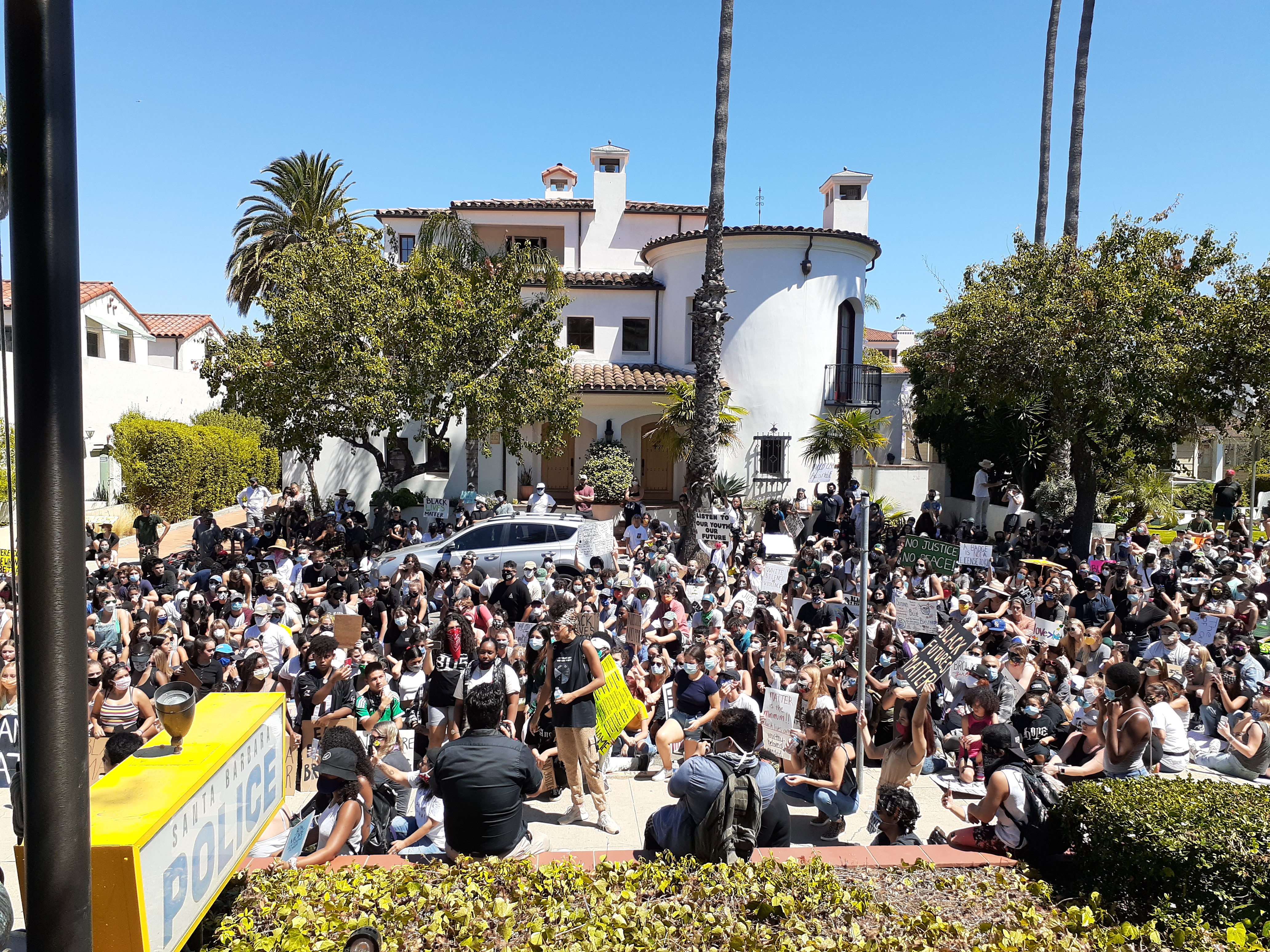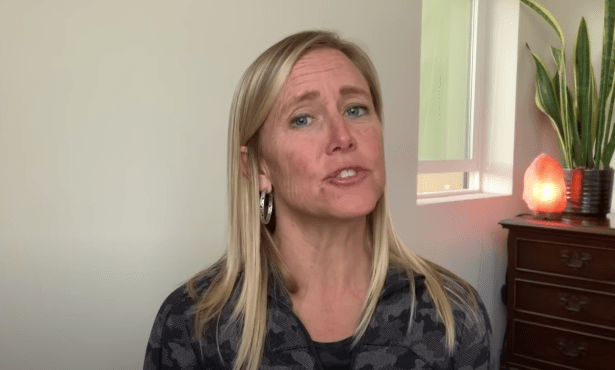Major Questions Loom about SBPD Citizen Review Program
City Looks at Options for Establishing a Police Oversight System

(This story originally ran on Newsmakers with Jerry Roberts.)
In 2015, President Obama’s “Task Force on 21st Century Policing” released a comprehensive study that recommended a sweeping set of best practice proposals for making police departments “more just, safe, effective and constitutional.”
Obama appointed the 11-member, nonpartisan expert panel in the wake of civil unrest in Ferguson, Missouri, following the police killing of a black man named Michael Brown. The “law and order” Trump Administration predictably junked the report, but it now stands as a road map for progressive reform, amid the current wave of anti-racism protests triggered by the brutal death of George Floyd at the hands of a Minneapolis policeman.
Among other key measures, the Obama-era blue ribbon commission recommended that communities across the nation include civilians in overseeing police departments and the behavior of sworn officers. From the report:
“Some form of civilian oversight of law enforcement is important in order to strengthen trust with the community. Every community should define the appropriate form and structure of civilian oversight to meet the needs of that community.”
Now, the city of Santa Barbara for the first time is about to embark on creating a structure for citizen review of the SBPD.
On Tuesday, the council is poised to take the first step towards creating a civilian review program, by directing the City Attorney to prepare a “presentation on options for establishing an independent police oversight system” in advance of its July 14 meeting.
Decades of research, and the real-life experience in countless other cities, demonstrates that crafting a structure, policies and procedures for civilian oversight of the police is a fraught and complicated challenge. Council members face complex social, political and financial cross-currents that will require weighing and balancing the interests and influence of a wide range of community stakeholders, from the professional Police Officers Association to neighborhood activists and leaders of the Black Lives Matter movement.
“Civilian oversight is a key component of the effort toward more equitable policing practices in our community,” said council member Meagan Harmon, who has emerged among local elected officials as the most enthusiastic champion of citizen review.
“The creation of an oversight board is an incredibly complicated endeavor and must be done in conversation with the community,” she added.
The independent review is one of several items on the council’s agenda that stem from demands presented by leaders of Black Lives Matter during the large and peaceful rally and march the group organized on May 31.
The others — an official declaration that racism represents a public health emergency; a push to preserve Black community historical landmarks; support for an annual commemoration of “Juneteenth,” recalling the end of slavery — all carry importance. As a practical matter, however, the establishment of civilian oversight over policing likely will become the most far-reaching.
The devil will be in the details.
Our story to date. Efforts to put civilian oversight of local police departments in place date back at least to the 1940s, when black community leaders and activists in Washington D.C., led by the NAACP, succeeded in getting such a panel adopted.
The board, however, was quickly beset by acrimony, struggle and resistance, in large part from police officers and the politicians who supported them, a political dynamic that has been repeated in decades since in hundreds of other municipalities.
In 2001, a U.S. Department of Justice report, undertaken to study the widespread rise of civilian oversight in the decade after the Rodney King riots, reported on costs and benefits of nine distinct systems in use across the U.S. The report, aimed at local and state government officials, police unions and civic organizations concluded that:
“There has been a considerable increase in the number of oversight procedures that various cities and counties have implemented in the 1990s..However, many of these procedures have had a troubled history that has involved opposition from concerned citizens and community organizations and from law enforcement agencies and police unions.
“. . . The main problem with many citizen review procedures . . . is that they have not had a clear vision of their role and mission . . . This has usually been the result of a failure of civic leadership. Both community activists and government officials have not taken the trouble to study what other jurisdictions are doing, to borrow the best practices and to learn from their mistakes.”
In a 2016 national survey report on municipal civilian oversight of police, published in the Seton Hall Law Review, Udi Ofer, an attorney and the executive director of the ACLU in New Jersey, summarized the challenge faced by local jurisdictions this way:
“Building an effective civilian review board is no easy task. It requires a groundswell of community support and a sophisticated understanding of the nuances of civilian oversight. It helps to have a willing mayor, city council (or at least a majority of the council), and police chief. And it takes money and time to get it right.
As a consequence, all too often even well-meaning policymakers and activists settle for less…Arguably, a weak civilian review board is worse than no civilian review board because it gives the illusion of independent accountability but actually provides little to no accountability.
A weak civilian review board can lead to an increase in community resentment, as residents go to the board to seek redress yet end up with little. Spending several years, even decades…to get it right is more important than moving quickly and getting it wrong.”
Key questions. A data base of “American Law and Legal Information” defines a civilian review panel this way:
“A municipal body composed of citizen representatives charged with the investigation of complaints by members of the public concerning misconduct by police officers. Such bodies may be independent agencies or part of a law enforcement agency.”
Within that deceptively simple description, however, lurk many fundamental questions and crucial decisions underpinning the structures, policies and procedures of independent citizen review systems which have challenged, and sometimes confounded, those who have implemented such governance in other jurisdictions for 80 years. A small sampling:
Authority. Will Santa Barbara’s civilian review system be advisory? Or will it have independent power in the adjudication of citizen complaints of police misconduct and discipline of officers? Currently, that authority rests with the police chief, who typically acts on information developed by internal investigation.
How will an “independent review” panel change this process, if at all? Will the panel have an important role at the front end — as the venue where complaints are filed, for example? What ultimate authority, if any, will it have to accept, overrule or change decisions in individual cases made by the chief? Will it act as an appeals board for citizen unsatisfied with department proceedings and, if so, what will be the limits of its jurisdiction?
Investigations. Will the new community review system include the power — and financial and professional resources — to conduct independent investigations? Will it have legal authority to subpoena witnesses, documents and other materials? Or will it rely on internal department investigations, with its role defined as offering opinions or recommendations after reviewing them?
Composition. If the council decides to form an independent review panel, how many people will serve on it, and who will be the decision makers in determining appointments? The Chief? The City Administrator? Council members? Community organizations, such as Black Lives Matter, or other groups focused on legal, mental health, youth or immigration concerns?
Scope. Over what areas of police conduct will a civilian panel have jurisdiction – Complaints of excessive force? Unlawful arrests? Disrespectful behavior? Training policies and practices? The frequency and conduct of patrols in specific neighborhoods? Will creation of the new system require voter approval of a charter amendment?
Budget. Will the new system include public funds for staff, investigators, office space? Or will it be a wholly voluntary operation? If the former, will it be attached for budget purposes to the police department or financed independently? If the latter, how will it differ from the existing Fire and Police Commission?
Santa Barbara’s elected leaders now face the challenge of determining how a new system should work for the city, at a time when anti-racism activists are pressing hard for substantive change — and the city has an existing collective bargaining agreement with its sworn officers.
How they meet the challenge will be an uncertain, intriguing and consequential process.
“Ultimately, civilian oversight is a win-win — communities with robust civilian oversight see reduced use of force and enhanced community buy-in, leading to safer, healthier cities overall,” Harmon said.
“Giving non-police community members a platform to provide oversight into department operations and actions serves a dual purpose,” she added. “First, the public will have a voice in police processes, and second, law enforcement will be directly accountable to the community they serve.”
At the Santa Barbara Independent, our staff continues to cover every aspect of the COVID-19 pandemic. Support the important work we do by making a



